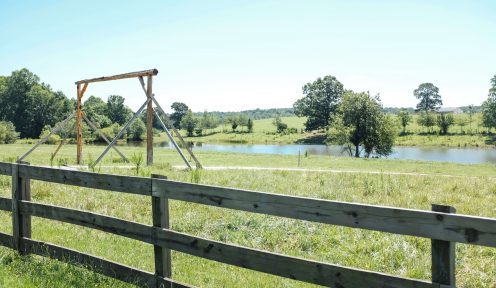
19.09.2019
Real Estate in UK
These are the highlights if you want to know more about Real Estate in UK. This entry was drafted by McCarthy Denning Limited. Link to e-IURE Network.
This collaboration is a brief step-by-step guidance. In no case it can be considered as legal advice. If you want -or need – legal advice, ask for a lawyer or a law firm. In that case McCarthy Denning Limited is an excellent option in UK.
Types of Ownership
For the purposes of this section, the UK is understood to be England, Wales and Northern Ireland with the exclusion of Scotland. Scotland has a different system of land ownership.
A few words about terminology may help. Both the words “land” and “property” mean real estate. The word “premises” may also be used. This has the same meaning as “land” and “property” but is most commonly used to describe land or property included in a lease.
There are three types of ownership in the UK. They are freehold, leasehold and commonhold.
Freehold is absolute, unlimited ownership. The owner of a freehold has no landlord and can do whatever he likes with his property subject to the general law of the land and subject to any restrictions placed on the property.
Freehold ownership is most common for residential houses, large estates and investment property.
Leasehold ownership is where land is held by one person (called the tenant) from another person (called the landlord) for a limited period of time on the terms of an agreement (called a lease). Most business premises in the UK are occupied under leases. Residential flats (apartments) are also mostly occupied under leases. A tenant under a lease will pay a rent to the landlord. The lease will last for a limited amount of time. The lease document itself will contain rights and obligations both for the landlord and the tenant and numerous restrictions on what the tenant can and cannot do with the property. Modern commercial leases are long, complex documents which require legal advice. Some leases are extremely long (say 999 years) and these are sometimes referred to as virtual freeholds although that is not strictly a legal term. There are legal reasons why sellers will sometimes prefer to grant extremely long leases or virtual freeholds rather than selling s freehold.
The third form of ownership is commonhold which has been introduced recently. This new system of ownership was designed primarily for blocks of residential flats and other developments with lots of units. At the time of publication, the use of this new system of ownership is very rare.
Properties can be owned in a number of different ways, including by individuals, companies, general partnerships, limited liability partnerships, charities and trusts. Professional advice should always be sought on the most efficient way of owning property in the United Kingdom and the tax implications of any option.
Land Registry
There is a computerised register of land in the UK maintained by a government agency called the Land Registry. The register is computerised and accessible via the internet. The register is maintained by a number of district land registries located throughout the country. At the moment, not all land in the country is registered but the vast majority is, especially in urban areas. The government is also committed to introducing a system whereby land can be transferred electronically. At present, this system is not possible even though the actual process of registration of land is often now carried out electronically.
All registered land has its own “title number” and plan which identifies the land in question. The entries which appear on the register against a particular title number are matters affecting the title to properties and definitive proof of ownership. There are certain rights and obligations (called overriding interests) which are not noted on the register of title. Overriding interests include matters such as rights of way where there might for example be a footpath crossing a property but no express registered right on the title. Many, but not all such rights and obligations, will be apparent by a proper inspection of the land in question or by making enquiries of the current land owner/occupier.
Transfer and Contract
Generally, land can only be transferred by deed. A deed is a document usually prepared by a lawyer which is signed and witnessed and brought into effect in a particular way. This process does not require a notary. In order for a transfer of registered land to be effective, it must be completed by registration at the Land Registry. This cannot be done unless the relevant tax (Stamp Duty Land Tax) has been paid on the documents. This is commented on further below.
It is important to understand in the United Kingdom that verbal agreements in relation to land and even some written agreements are not legally binding. There is usually a period after terms have been agreed during which either party can decide not to proceed if they want. It is usually only when contracts “have been exchanged” that a binding obligation arises and invariably time and costs have to be incurred before that stage is reached.
Mortgages And Charges
If money is borrowed to assist with the purchase of land in the UK, the lender will invariably take a mortgage or a charge over the land in question. A commercial mortgage will normally involve two key documents. The first is a loan agreement which can be in the form of a formal agreement or a letter (sometimes called an offer or facility letter). The second document is the mortgage itself which creates the security over the land and is registered at the Land Registry.
The lender who takes a mortgage is called a mortgagee or chargee. The mortgagee’s main rights are as follows:-
- to be repaid the loan plus interest and costs.
- if the borrower defaults, to take possession of the mortgaged property and to sell it to repay his loan. It is not always necessary for a mortgagee to obtain a court order before taking possession or selling the mortgaged property.
- to appoint a receiver to manage and if necessary sell the property.
- to prevent a sale of the property if he is not repaid.
In practice, the mortgage or charge is now the only recognised formal, fixed security taken over land in the UK. Businesses may also be asked to provide floating charges in favour of institutional lenders. These floating charges claim all the assets of the business (by way of a document called a Debenture) but only restrict dealings with those assets if the borrower is in default.
Restrictions on Acquisition
There are no restrictions on foreign ownership of UK property but the way in which property ownership is structured is critical and different types of ownership have different implications – including practical, fiscal and regulatory and professional advice should always be obtained. Any new person or body acquiring property in the United Kingdom will have to provide identification evidence and comply with the increasingly complex due diligence requirements imposed by the money laundering regulations.
Legal Protection for Buyers and Sellers
In general, the law gives no special protection to buyers or sellers of UK property. Those involved in property transactions will invariably use a solicitor to represent their interests. It is the job of the buyer’s solicitor to ensure that the property being bought is free from undisclosed restrictions or obligations and that it is validly transferred at the correct price. The Latin phrase “Caveat Emptor” or “Let the buyer beware” is the fundamental principle: it is the responsibility of the buyer to ensure that it and its professional advisers carry out all appropriate due diligence to ensure that they understand exactly what it is that they are buying and all the implications which ownership of the property will entail before they commit to its purchase.
Restrictions on Development
UK law prohibits the development of land without planning permission. Development includes changing the use of land or carrying out building, mining or engineering operations on land. A planning permission is a permission given by the planning department of the relevant local authority. The local authority is allowed eight weeks in which to reach a decision on any planning application.
Some types of minor development are permitted without planning permission. Specialist advice needs to be sought on to understand what is and is not allowed is tightly controlled.
The law also requires that anybody carrying out building works must comply with building regulations and generally obtain a building regulation consent. That is a formal consent from the District Surveyor (a local government officer) who will consider the plans and specifications of any building works before giving consent and inspect the progress of the works at key times and at their conclusion.
All local authorities prepare plans for how they want different parts of their areas to be used and developed. Those plans are available to the public. They will set out areas or zones where the local authority wishes to encourage particular uses (eg shopping, residential or industrial) and discourage other uses. The local government will consider any application for planning permission in the light of these plans so that, for example, applications for industrial development in residential areas will not succeed.
Leases
A lease is the most common way of holding commercial property in the UK. The length of leases will vary depending upon the circumstances and requirements of the parties. There is however a standard which is called an institutional lease. Such a lease is in a form which might be granted by a major financial institution such as an insurance company, investment trust or property company. Institutions tend to look for longer leases, eg: 15 years or more (though terms of 10 years and even 5 years are not uncommon). Sometimes, landlords or tenants are given a right to terminate a lease before it expires. The rent will usually be subject to review most commonly at 5 yearly intervals. Rent reviews in the UK are almost invariably on an upwards only basis. This means that the terms of the lease guarantee to the landlord that either the rent will go up in line with market rents or it will remain the same even if the market rent has fallen below the existing rental level. It is very common for no rent to be payable for a short time at the beginning of a new lease in recognition of the fact that tenants will usually want to fit-out their new premises and not be able to trade from them for a while.
An institutional lease will also be a “clear” lease. This means that the rent the landlord receives will be clear of any deductions to cover the cost of, for example, repairs and maintenance of the building, the supply of services to the building and the cost of insuring the building. All these expenses will be payable by the tenant or (in a building containing a number of tenants), by all the tenants together. These extra payments on top of rent are generally called a “service charge”.
In addition to rent and service charge, there are local taxes to be paid to the local authority which are called business rates. These can be quite significant, particularly in cities.
The lease will impose obligations and restrictions on the tenant. The obligation which is most significant from a financial point of view is the obligation to repair, decorate and, if necessary, re-build or pay towards the cost of rebuilding. In an office block, for example, the tenant will be responsible for maintaining, repairing and decorating his own property. He will also be responsible through the service charge to contribute towards the cost of repairing and maintaining the building of which his offices form part including all services to the building (eg lifts, air-conditioning and heating plant and systems and so on). It is often the case that these expenses are not capped and if the building and its services are old, the tenant can face very significant extra costs through the service charge.
Some of the other important provisions in a typical commercial lease are as follows:-
- restrictions on use
- restrictions on alterations to the property
- restrictions on disposing of the property
- VAT is often payable on the rent of commercial property.
Any lease granted for more than 7 years must be registered at the Land Registry.
Tenants of property used for business purposes will often (but not always) have statutory rights to remain in the property when the lease comes to an end. They will have to negotiate a new lease and pay a commercial rent, but the landlord cannot insist that they vacate unless special circumstances apply. It is quite common for the statutory rights to be excluded by agreement between the parties.
Stamp Duty Land Tax
Stamp Duty Land Tax (“SDLT”) is a tax payable to the government on land transactions. Any sale of freehold or leasehold land or the grant of a lease at a rent gives rise to SDLT. The tax is payable by the buyer or the tenant. The legislation is frequently changing and advice should always be taken on the amount of tax payable on a transaction. The method of ownership as well as a number of other factors can have a bearing on the amount of tax payable.
VAT
Value added tax is generally not payable on residential land. In some circumstances it is payable on the purchase price of commercial land and it is also often payable on rent and charged to tenants. Professional advice should be sought in every instance.
Setting Up in Business in the UK
The property choices for a business setting up in the UK include:
Serviced Office
These are usually small offices where office services are supplied as part of the package. The extent of services varies between providers but normally they will include furniture, use of equipment (such as photocopies and fax machines), telephones and telephone answering, conference facilities and secretarial services. The commitment is short term and the cost is relatively high. Such arrangements, however, can be extremely flexible.
Short Term Licence
This is similar to a lease but very short term (i.e. 6 months to a year). It would generally give the new business the space only. The tenant would have to supply furniture, equipment and personnel. There would be no security when the licence comes to an end. Sometimes arrangements are granted on a rolling basis, that is they continue indefinitely until brought to an end by notice.
Lease
The minimum commitment would generally be for between three and five years. Shorter periods are sometimes available from tenants who themselves have surplus space (ie by taking an underlease). Landlords wish to be satisfied above all that the incoming tenant is able to pay the rent and fulfil the tenant’s obligations in the lease. They want to see accounts and references that demonstrate this. They may also require a guarantor or a rental deposit or some other form of collateral security.
Buy a Freehold
This would involve a major capital commitment and may be inappropriate for smaller businesses. It does however avoid entering into longstanding obligations with landlords and avoids an ongoing obligation to pay rent and usually means there is more control over when an expenditure is incurred, for example to repair buildings.












